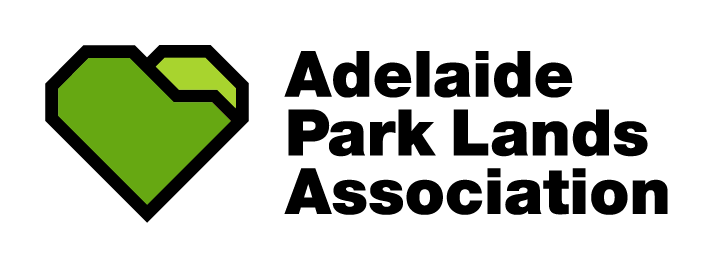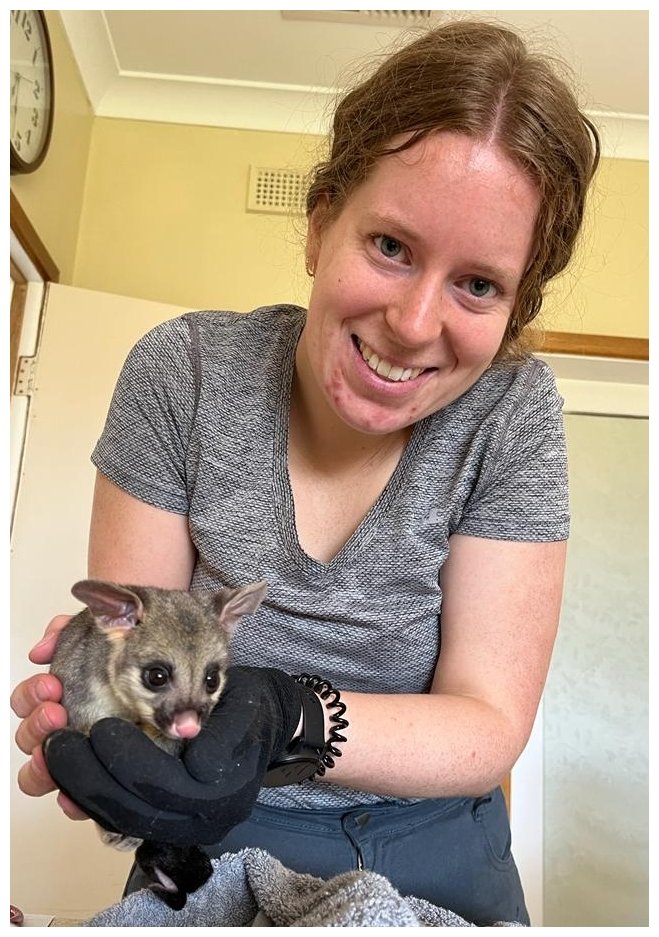by Tara McKenzie
In the possum surveys conducted in the summer of 2023/24 as part of the City of Adelaide’s Biodiversity Survey, I found that Whitmore Square, despite being the smallest park in the CBD, has the greatest density of brushtail possums. Such a high density in a small area with limited resources can have devastating effects on the health of wildlife populations.
Possum population density in your Adelaide Park Lands. Image: Tara McKenzie
We are already seeing some of these effects, with a condition known as possum dermatitis severely impacting a large proportion of the Whitmore Square possum population, compared to possums in other parts of your Park Lands.
A possum affected by dermatitis. Pic: Tara McKenzie
What is possum dermatitis?
Possum dermatitis or exudative dermatitis is considered a common skin condition of brushtail possums that has been described since the 1970s, yet, to this day, this disease still has an unknown aetiology – meaning we don’t actually know what causes it.
Possum dermatitis in its minor stages, appears as dry, flaky skin and some loss of fur, often on the rump, base of the tail or face. As the condition worsens, affected areas (particularly the face and limbs) lose all hair, the skin becomes thick and ulcerated, and open wounds quickly become infected.
The condition is extremely painful, can limit a possum’s ability to move and seek food and shelter, and the ulceration can be so severe that the skin on the face, especially eyelids and lips can be literally eaten away.
When possums suffering from dermatitis come into the care of veterinarians or wildlife carers, they sadly most often need to be euthanised, as the only treatments we currently have are antibiotics to treat the secondary infections that occur, not the underlying cause of the disease.
It is generally believed that possum dermatitis is a stress-related condition, with social stressors, such as high population density or habitat loss, and tropical weather conditions as the most commonly described factors that contribute to the development of this dermatitis.
However, possum dermatitis is seemingly becoming less and less of a problem in the eastern states, where possum densities are far larger than here in SA and tropical conditions are more common – so why is possum dermatitis such a problem in your Adelaide Park Lands?
What else could be causing it?
The limited information that exists about possum dermatitis suggests there could be things other than just stress causing dermatitis – mite and other parasite infestations, immune system hypersensitivity reactions, or bacterial or fungal infections, but nothing has ever been proven and our understanding of this prevalent disease is still so minute.
What are we doing about it?
Thanks to a collaboration with Dr Steve Melvin from Griffith University in Queensland, fellow University of Adelaide researcher, Dr Rebecca Souter and I have the opportunity to use Metabolomics (the study of the metabolome - the complete collection of metabolites within a cell, tissue, or organism) to explore the cause of possum dermatitis in a way that has never been done before.
Two possum traps in place in Whitmore Square / Iparrityi. Pic: Tara McKenzie
We use small cage traps baited with peanut butter to trap possums, then take them for a thorough heath check, where we record vital information including age, sex, body condition, degree of dermatitis state and any other key findings that could impact the health of the animal – like when we were luck enough to find a newborn possum joey (less than 24 hours old!!) in the pouch of a healthy mother.
We then collect small blood samples (just 5µL are required for metabolomic analysis, 1mL = 1000 µL) from both healthy possums, primarily from Park 6, and possums with varying severity of dermatitis, primarily from the Whitmore Square population. These samples will be sent to Queensland for metabolomic analysis, and we will be able to compare the metabolite levels (e.g. amino acids, sugars, fatty acids, lipids etc.) in healthy and unhealth possums.
We hope that this research will help uncover some of the unknowns of this debilitating disease, so we can provide vets and wildlife carers with better treatment options and help us better manage our possum communities going into the future.
*All animals have been handled by trained professionals for scientific research.
Ready for release. One of Tara McKenzie’s research subjects
If you find sick or injured wildlife, including possums suffering from dermatitis, contact the Save Our Wildlife Foundation Inc. (SOWFI) 24/7 wildlife rescue and advice line on (08) 7120 6610
Keep an eye out for the next instalment to hear about our investigation into how rodenticides (rat and mice poisons) are impacting possums across Adelaide and what you can do to help.
Tara McKenzie is a University of Adelaide researcher, studying possums both in the Riverland, and in your Adelaide Park Lands.
Her research included an internship with the Adelaide Park Lands Association where her main role was to collect information about the plant and animal species that are found across your Park Lands, with a focus on those that have an important role in possum habitats.











